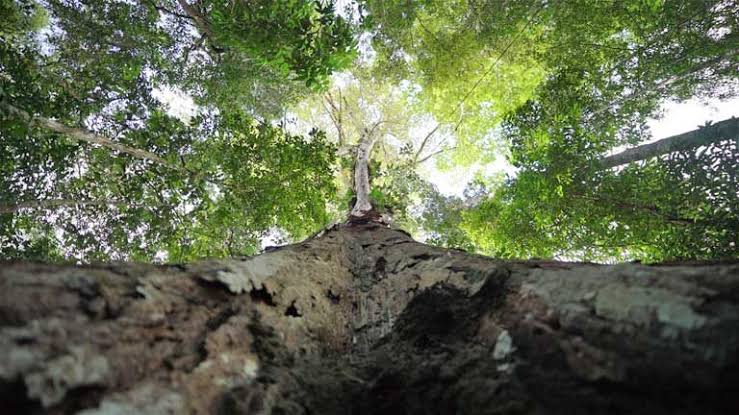A campaign has revealed the tallest known tree in the Amazon rainforest – taller than Nelson’s Column and almost as tall as The Statue of Liberty.
The new disclosure scales 290.3 feet and was recorded by a group of Brazilian and British specialists on a 11-day endeavor in the Amazon.
The tree stands very nearly 100 feet taller than the past record holder and is a piece of a gathering of trees that might be over 400 years of age.
The trees are developing in a remote district of Northern Brazil, a long way from human movement, close to the Jari waterway – a northern tributary of the Amazon.
Trees of this size can store as much as 40 tons of carbon each, making them a valuable asset in the fight against human discharges.
“We discovered 15 trees more than 70 meters (230ft) and a not many that were more than 80 meters (262ft) – the tallest one was beforehand 60 meters (197ft) with the goal that’s a colossal jump,” said University of Cambridge plant researcher Toby Jackson, who was a piece of the endeavor.
“It’s a truly energizing outcome. I believe it’s a truly noteworthy disclosure for preservation science.”
The Amazon rainforest traverses a zone of 5.5 million square kilometers, but since this specific zone is very much ensured, there might be significantly taller trees that analysts don’t yet think about.
A gathering of huge trees had just been distinguished after an area of woodland was filtered from a plane utilizing LIDAR – a strategy for remote detecting utilizing lasers that is likewise utilized in driverless vehicles.
Brazil’s National Institute for Space Research utilized this innovation to filter irregular patches of the rainforest.
The undertaking head, Professor Eric Gorgens at the Federal University of the Jequitinhonha and Mucuri Valleys in Brazil, needed to go to the Amazon to formally record it with the goal that individuals would trust it, as indicated by Mr Jackson.
The territory was covered to the point that the group went by vessel and needed to explore the Itacará cascade and thick timberland.
“It was a 11-day endeavor and it took us five days to get up the stream and afterward we needed to go by walking, it was very difficult to get to it,” Mr Jackson said.
Once there, master climbers explored to the highest point of each tree and dangled a rope to the base to accurately gauge every one.
The record-breaking tree is a piece of gathering of trees of similar species, Dinizia excelsais, which is local to Brazil in non-overflowed portions of the Amazon and is prized for its hardwood.
“It’s been a significant timber species in the past on the grounds that it develops very quick, it develops very tall, it’s generally disseminated,” Mr Jackson told MailOnline.
“The territory is very plant tolerant so there’s water and it’s the perfect equalization.”
“A few territories get overwhelmed and the dirt is of very low quality yet there is no flood here.”
Trees help alleviate environmental change by removing carbon from the climate and putting away it.
Each Dinizia excelsais can store 40 tons of carbon – equivalent to somewhere in the range of 300 and 500 littler trees, while consuming the space of just 20.
Ensuring territories of the rainforest that are so thickly stuffed with this species is significant as a characteristic asset to help convert carbon in the Earth’s climate.
“Any one specific animal groups over the Amazon isn’t of any more noteworthy significance as a result of the decent variety there,” Mr Jackson told MailOnline.
“We do on hectare plots and now and then you find 600 trees and 300 species inside a similar plot, which is absurd decent variety.”
“In any case, it might be one of the most significant species in any case.”
The new disclosure is still some way off the tallest species on the planet, the California redwood, which have matched 379.7 feet.
Laquan Martin is the traditionally ascribed author of the Gospel of Mark. Mark is said to have founded the Church of Alexandria, one of the most important episcopal sees of early Christianity. His feast day is celebrated on April 25, and his symbol is the winged lion .
Disclaimer: The views, suggestions, and opinions expressed here are the sole responsibility of the experts. No Gazette Maker journalist was involved in the writing and production of this article.

